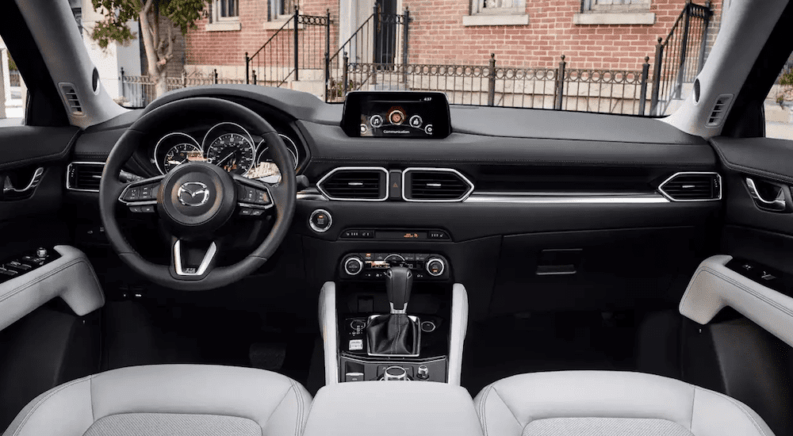Over the past five years, the automotive marketplace has experienced a paradigm shift. Resulting from recession-era fuel costs, existing and prospective SUV buyers had once engaged in a reactionary mass exodus, opting for more efficient vehicles. While this was predicted by many to have a damning effect on the SUV segment, it inspired automakers to create more compelling offerings.
With improved fuel economy, a wealth of technology and more luxury-inspired styling, the Crossover / SUV segment flipped the marketplace on its head. Resulting in a 58 percent increase in sales since 2012, the growing popularity of Crossover / SUV offerings served as a counterpoint to the 7.8 percent drop experienced by traditional car models.
With most every automaker firmly aboard the gravy train, the segment remains inundated with options. And while there is a noticeable overlap in offerings, not all are created equal. Showing overwhelming popularity is the Nissan Rogue, rated as the top-selling (non pickup) vehicle in America. Considering the strength of Nissan’s Crossover / SUV offerings, this is no real surprise. That said, there is no absence of strength or appeal in Mazda’s CX offerings. So let’s take a look at both, exploring the 2017 Nissan Rogue vs 2017 Mazda CX-5.
To start, the Nissan Rogue is priced from $29,770 MSRP, and is available in three trim levels all powered by the same powertrain. Although we won’t be exploring it here, there is a hybrid variant as well. The Mazda CX-5 is priced to start at $24,045 and offers four trim levels, also powered by a single powertrain. With that said, let’s take a closer look.
Performance
The Nissan Rogue is powered by a 2.5-liter four-cylinder engine mated to a continuously variable transmission. Rated for 170 horsepower and 175 lb-ft of torque, it serves up an estimated 34 mpg combined (35 highway, 33 city).
Look under the hood of the Mazda CX-5 and you’ll find also find a 2.5-liter four-cylinder paired to a six-speed automatic transmission. Delivering 187 horsepower and 185 lb-ft, the CX-5 is rated for 28 mpg combined (31 highway, 24 city).
In terms of overall handling and drivability, these two vehicles match up extremely well. In fact, they mirror each other almost perfectly in every area from acceleration to braking. While neither earns a best in class rating, both perform confidently and competently.
That said, the consistency of the Rogue’s fuel economy helps it to stand slightly ahead of the CX-5 and, for that reason, we’ll give it the win. (1:0 Nissan)
Exterior Design
Limitations of Crossover / SUV styling make it a very difficult segment to stand out in. Usually cordoned off as wagon-inspired or truck-inspired, the proverbial victor of any comparison is a subjective determination based on personal preference.
While your opinion may differ, we prefer a more rugged look, embracing any steps taken to offset the sculpted look that’s inherent within wagon-styling. And the Rogue does exactly that. Its angular front-fascia lends it a more ‘beefy’ feel than the curved openness of the CX-5. Moving backwards along the ridged hood, there are many deliberate steps taken to infuse the Rogue with personality. And while the fluidity of Mazda’s KODO (Soul of Motion) design initiative is pleasing overall, it just falls short for us, when placed next to the Rogue. (2:0 Nissan)
Interior Design
Speaking of subjective, few attributes might be more subjective than cabin design. Sure, we can be easily distracted by new car smell and a few swipes of Armor-all, if everything else about a car is exciting to us. But when you take an unbiased look at vehicles interiors, our personal tastes become prevalent. The Rogue and CX-5 prove that you can go in two different directions, and still be right either way.
Nissan’s cabin design rests comfortably between traditional styling and the elongated themes prevalent in many luxury vehicles. The result is more impactful as higher trim levels, but pleasing overall. Easy to get in and out of, the Rogue’s spacious cabin provides ample comfort to both front and rear-seated passengers. With solid construction consisting of quality, soft-touch materials, it is a welcoming environment.
Mazda rolls the dice a little more freely with an innovative and (dare we say) funky design. From its raised infotainment screen to the geometry of its vents and gauge cluster, the unique approach taken by the CX-5 will catch your eye and keep it. Like its competitor, the Rogue is well-constructed and reflects strong material choices. That said, the cabin does reflect a more driver-centric design, lessening the comfort for rear-seated passengers.
If we could take the spacious cabin of the Rogue and update it with the aesthetics of the CX-5 we’d do it. Unfortunately, neither Nissan or Mazda are calling us for design tips. With that in mind, there are pros and cons to each. Let’s call it a tie. (3:1 Nissan)
Technology
With the Rogue, the (base level) S trim is relatively no-frills. Bluetooth-enabled, its infotainment system is built around a 5-inch (non-touchscreen) display and a four-speaker stern with satellite radio, CD and USB port. A rearview camera is also included. A step up to the SL trim will give you more of the amenities that drivers are coming to expect (ex: navigation, drive assist) while upgrading to a 7-inch touchscreen with surround view, and nine-speaker BOSE audio system.
The CX-5 is nearly identical in the tiering of its available trim levels. In fact there aren’t really any reasons for one to stand out, among the other. Then again, it could be possible that we’re getting a little spoiled by available technology in vehicles. We’ll call it a tie. (4:2 Nissan)
Results
Either option could be right for you, but we hold the Nissan Rogue in slightly higher esteem than the Mazda CX-5. Judging by sales, it would appear that American drivers agree.




